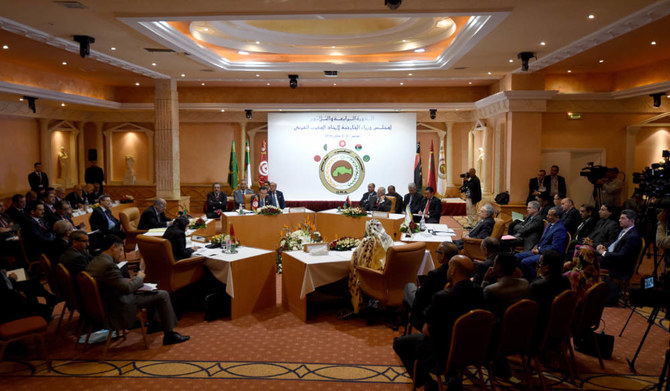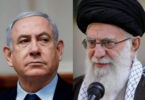Hafed Al-Ghwell
During the tumult of the 1980s, a vision for the Arab Maghreb Union (AMU) emerged in which the five principal states in the region — Algeria, Libya, Mauritania, Morocco and Tunisia — would form a union characterized by fraternity, equality and peace.
Now, however, the state of affairs in the subregion stands in stark contrast to the transient pan-African ideals of yesteryear. Two of its most populous countries, Algeria and Morocco, have effectively disconnected from each other, wreaking havoc across the region. Their rivalry is far-reaching, influenced by a deep-rooted distrust and tense geopolitical competition over hegemony in northwestern Africa and beyond.
An improvement in relations between Algeria and Morocco is perhaps the key to unlocking the Maghreb’s successful integration into a new era of intraregional cooperation, and also to revive the spirit of the AMU. Unfortunately, an as-yet unresolved question over the Western Sahara, now thrust into the spotlight due to reverberations from normalization agreements elsewhere, is feeding into an all-too-familiar dynamic.
Both countries have become more determined to pursue damaging zero-sum mentalities, whereby one country’s fortunes widens rifts and reduces future opportunities for rapprochement.
Beyond abysmal trade relationships and the characteristic exchange of barbed comments, the challenges plaguing the Maghreb region are manifest and deep-rooted. The AMU’s last intergovernmental summit took place in 1994, yet another indicator of the severe dysfunction consuming the region.
This level of deterioration calls for immediate intervention, not more fruitless discussions of whether the Maghreb can “regionalize” without integrating, which only sidestep the issue or demonstrate a remarkable misunderstanding of the Maghreb’s political economies.
The failure to act has spawned new risks and revived old threats, leaving the subregion descending further into disarray and instability. A dream of unity, equality and prosperity that once inspired the formation of the AMU is fast fading.
The AMU, with all its unmet aspirations, finds itself in an economic quagmire that also holds back much-needed integration, trade liberalization, and enhanced cooperation. The culprits are many: Excessively stringent trade and investment policies, punishing tariffs, non-tariff barriers, and the subpar infrastructure that links AMU nations.
Export and import border compliance costs, which are among the highest in the world, are other significant contributors. Furthermore, intra-regional trade infrastructure is sorely lacking. Take, for example, the lack of commercial transportation between the ports of AMU nations, despite their coastal locations.
Tellingly, AMU member states consistently look toward Europe, shaping trading policies to mirror European ideals and markets, and becoming living proof of the saddening reality of how relative trading costs supersede absolute ones.
In other words, trade experts argue that proximity to booming trading hubs, such as the European Common Market, tends to discourage intra-regional trade rather than promoting it. Consequently, the AMU is also missing out on golden opportunities to become a trade and investment intermediary between Europe and a developing Africa. This unforced error plays right into the broader issue at hand: A damning lack of regional integration that is thwarting the Maghreb’s place on the global value chain.
The curious case of duplicate trade agreements is another compounding factor. A majority of AMU countries are enmeshed in a web of bilateral and regional economic agreements, all supplemented by their memberships in the World Trade Organization. This convoluted mesh of overlapping agreements is colloquially termed the “spaghetti bowl” phenomenon, which creates its own share of headaches. Each country must navigate different terms of trade, tariffs, non-tariff measures, and so-called “rules of origin.”
Juggling these diverse and often conflicting rules can be incredibly burdensome, particularly for countries with limited institutional capacities or compliance abilities. The irony is that instead of accelerating trade, they slow it down, increase costs, and cause diversions in trade among AMU countries. Rather than greasing the wheels, these overlapping agreements cause everything to grind to a halt, and reveal that the road to integration is filled with economic potholes.
It is not all doom and gloom, however. The AMU still exists, in some capacity, so the spirit of its creation still survives. Moreover, even the feuding pair, Morocco and Algeria, have had brief periods during which cooperation blossomed, especially at the time of the regional upheavals in 2011.
During the uprisings that toppled seemingly unassailable regimes, both countries recognized a shared threat to the region’s status quo and hastily adopted a cooperative stance. During that lull in tensions, they struck a delicate balance between gradual and radical reforms, ultimately becoming role models for other beleaguered Arab states caught in a domino effect of revolutions and forced transitions.
For a brief moment, there was at least some hope that a joint pursuit of self-preservation might provide a foundation upon which future cooperation, greater collaboration and, ultimately, renewed prospects for integration could stand.
Regrettably, the hopes were short-lived, quickly overtaken by reignited rivalries. Thus, the dream of an integrated and cooperative Maghreb region remains unfulfilled and will, arguably, be much harder to realize than when the AMU was established 34 years ago.
The initial aspirations of the organization have shriveled, weakened by distrust and ceaseless political tensions. A glaring testament to this disintegration is the dismal figure for intra-regional trade, which stood at a mere 2.4 percent of total trade in 2021, ranking among the world’s lowest, and it is expected to shrink even further.
Sadly, not only has the prospect of prosperity and unity in the Maghreb region been heavily damaged, it appears set to regress even further, possibly even descending into all-out aggression. The closure of the Maghreb-Europe Gas Pipeline in November 2021 was another reminder of just how far-gone the situation is in the region.
The pipeline, once a shining example of mutual benefits and regional consolidation, channeled Algerian natural gas to Morocco, Spain and Portugal. Inaugurated in 1996, it was viewed as the Maghreb’s analogous infrastructure to the European Coal and Steel Community, which was a driving force behind the formation of the EU. The closure of the pipeline, after a 25-year transit deal that was not renewed, signifies, in grim terms, a premature epitaph for regional prosperity founded on shared interests.
The region is now characterized by a number of harsh realities. An important gas pipeline shut down. Land borders sealed. Airspaces closed. Diplomatic relations in tatters. Algeria and Morocco still embroiled in a torrent of tensions, with the slightest spark igniting malevolent accusations against each other.
In 2022, Morocco established a new military zone bordering Algeria, sparking alarm. This year, Algeria went further, all but declaring the end of its diplomatic relationship with Morocco. Their dispute is punctuated by live ammo military exercises near the border. It is a tragic drama that has unfolded over three years, during which both nations have endlessly pointed the finger of blame at each other for their broken relationship.
It is as though we have reached a point of no return but can a resolution be found even in such tumultuous times? Simply put, no.
The mounting tensions in the Maghreb remind us of a crucial truth: Events in this part of the world tend to ripple far beyond its borders, stirring up waves of instability in their wake. To date, members of the AMU seem to contribute more to destabilizing the subregion than shoring up its security, stability, sustainable development and resilience.
Of course, the simmering undercurrent of this strange dynamic comes from the quasi-cold war between Algeria and Morocco. However, Tunisia is also battling a socioeconomic crisis that has been escalating since President Kais Saied’s takeover of the country in July 2021. And Libya remains shackled by decades of instability, plus the scars of armed conflict, and thwarted attempts to mend deep-seated divisions and build credible state institutions.
The situation in the Maghreb is precariously balanced. It would take nothing more than a spark, accidental or deliberate, to set off this powder keg, spewing chaos to Mediterranean neighbors in the north and an already volatile Sahel region to the south. As such, calls for regional integration in the Maghreb sound like a broken record. They echo a fantasy that is increasingly out of touch with a grim and, frankly, disappointing reality.
Yet, ironically, there has never been a more pivotal time for signs of unity among these long-standing AMU member states, given the bleak outlook should they persist in their own isolation. Indeed, it is very difficult not to feel despondent about the Maghreb’s future, given the magnitude and complexity of the hurdles facing each individual country and the region as a whole.
But even when there is friction, there can still be a potential, albeit slim, for future betterment and advocating for a revival of intra-regional cooperation in the face of adversity.







